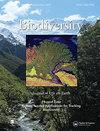英国河流状况
Q3 Environmental Science
引用次数: 0
摘要
怀伊河是英国第四长的河流,从威尔士中部的普林利蒙河源头到英格兰的塞文河口,全长250公里。它经过所谓的“英国鸡都”,估计有2000万只鸡在该河的集水区养殖。Robin Eveleigh表示,超市里的鸟平均价格不到一品脱啤酒(截至2021年6月14日,https://www.theguardian.com/环境/2021年6月14日/鸟类成本低于品脱欢迎来到英国家禽之都赫里福德郡。2020年,英国生产了170万吨鸡肉,比十年前增长了28%。英国的家禽产量出现了爆炸性增长,其中超过四分之一的家禽来自赫里福德、什罗普郡和波伊斯三个县,怀伊河流经这些县。随着这一增长,河流污染也大幅增加。越来越多的集约化家禽养殖场的鸡粪正作为肥料撒在土地上。高水平的径流正在进入周围的河流,导致越来越多的人将其描述为“豌豆汤”,也被称为致命的藻类水华。随着这些水华的泛滥,河流缺氧,毛茛等植物窒息而死,河流中的褐鳟、胖乎乎的和杠铃也在灭绝。连锁效应是,像标志性的翠鸟这样的鸟类的食物减少了。然而,这种现象不仅仅是家禽生产造成的。在英国河流中非法倾倒污水是一个巨大的问题,英国政府需要采取更大的行动。环境署(2022)主席Emma Howard Boyd在2022年7月的一份新闻稿中表示,“法院目前开出的罚款通常低于首席执行官的工资。投资者不应再将英格兰的水资源垄断视为单向赌注。环境署2022年3月发布的数据显示,2021年,英格兰各地的10家自来水公司在数十万小时内将未经处理的污水排入水道。372533次泄漏仅记录在事件持续时间监测器到位的溢流上:14707次溢流中有12608次,占89%。政府表示,减少暴雨溢流排放计划是改变供水公司处理未经处理污水排放数量的一步,政府和公众已经明确表示,这是不可接受的。这可能是一个很好的步骤,但让我们希望这也是一个快速的步骤。本文章由计算机程序翻译,如有差异,请以英文原文为准。
The state of UK rivers
The River Wye is the fourth-longest river in the UK, stretching 250 km from its source on Plynlimon in midWales to the Severn estuary in England. It passes through the so-called ‘chicken capital of the UK’, where an estimated 20 million birds are farmed in the river’s catchment. According to Robin Eveleigh, the average supermarket bird costs less than a pint of beer does (as of 14 June 2021, https://www.theguardian.com/ environment/2021/jun/14/bird-costs-less-than-pintwelcome-to-britains-poultry-capital-herefordshropshire-powys). The UK produced 1.7 m tonnes of chicken meat in 2020, up 28% from a decade before. There has been an explosive growth of poultry production in Britain, with over a quarter coming from just the three counties of Hereford, Shropshire and Powys, where the River Wye runs through. And with this growth comes a massive spike in river pollution. Chicken manure from the increasing number of intensive poultry farms is being spread on the land as a fertilizer. High levels of runoff are entering the surrounding rivers, resulting what is increasingly being described as ‘pea soup’ in appearance, also know as deadly algal blooms. As these blooms take over and starve the rivers of oxygen, plants such as ranunculus are suffocated, and the river’s brown trout, chubb and barbel are dying off. The knock-on effect is less food for birds such as the iconic kingfisher. This phenomenon is not caused solely by poultry production, however. The illegal dumping of sewage in the UK’s rivers is a massive issue, where far greater action from the UK government is needed. Emma Howard Boyd, the chair of the Environment Agency (2022), stated in a press release in July 2022 that ‘fines currently handed down by the courts often amount to less than a chief executive’s salary . . . Investors should no longer see England’s water monopolies as a one-way bet’. Data released by the Environment Agency in March 2022 showed that 10 water companies throughout England released raw sewage into waterways over hundreds of thousands of hours in 2021. The 372,533 spills were recorded only on those overflows where event duration monitors were in place: 12,608 of the 14,707 overflows, or 89%. The government said the Storm Overflows Discharge Reduction Plan was a step towards change in how water companies tackle the number of discharges of untreated sewage, which the government and the public have made clear are unacceptable. It may be a good step, but let’s hope it is also a speedy one.
求助全文
通过发布文献求助,成功后即可免费获取论文全文。
去求助
来源期刊

Biodiversity
Environmental Science-Nature and Landscape Conservation
CiteScore
1.80
自引率
0.00%
发文量
17
期刊介绍:
The aim of Biodiversity is to raise an appreciation and deeper understanding of species, ecosystems and the interconnectedness of the living world and thereby avoid the mismanagement, misuse and destruction of biodiversity. The Journal publishes original research papers, review articles, news items, opinion pieces, experiences from the field and book reviews, as well as running regular feature sections. Articles are written for a broad readership including scientists, educators, policy makers, conservationists, science writers, naturalists and students. Biodiversity aims to provide an international forum on all matters concerning the integrity and wellness of ecosystems, including articles on the impact of climate change, conservation management, agriculture and other human influence on biodiversity.
 求助内容:
求助内容: 应助结果提醒方式:
应助结果提醒方式:


